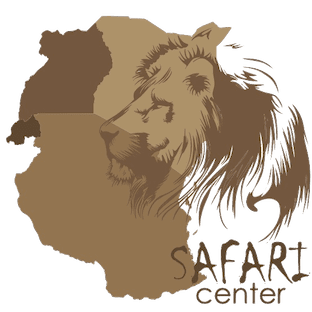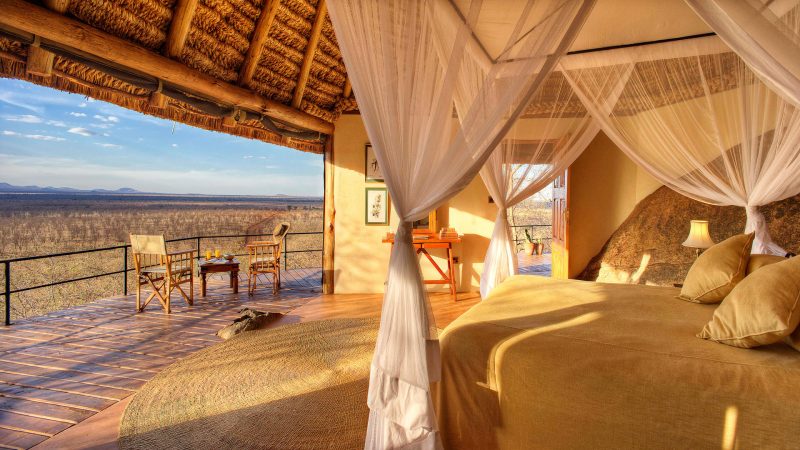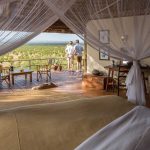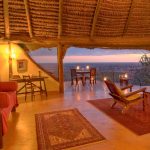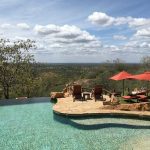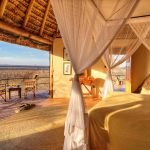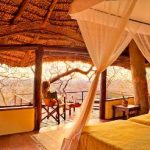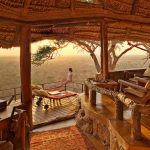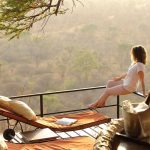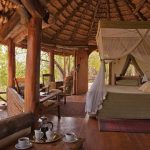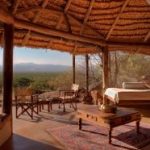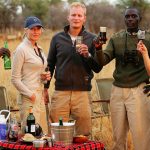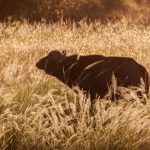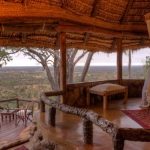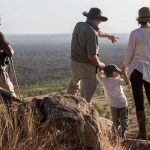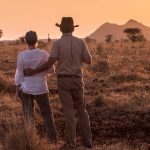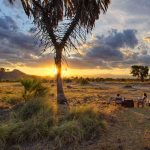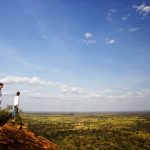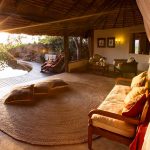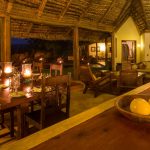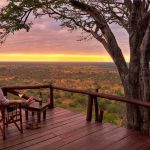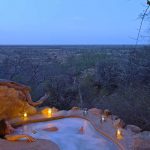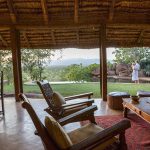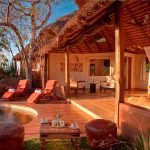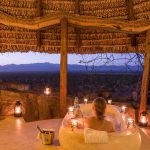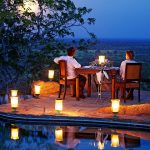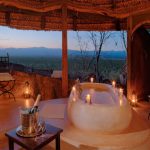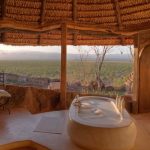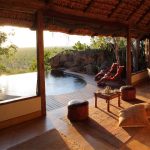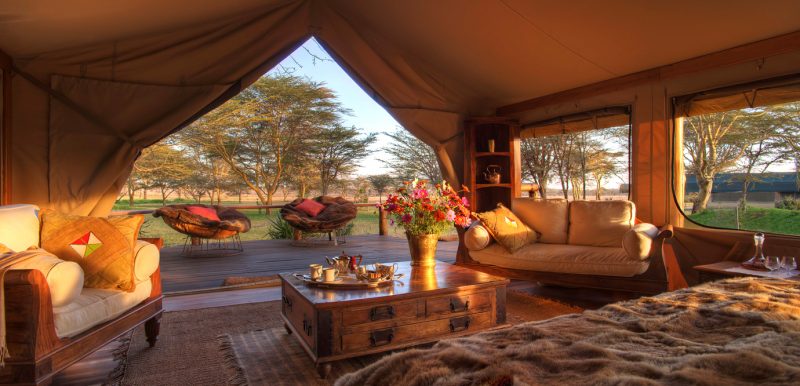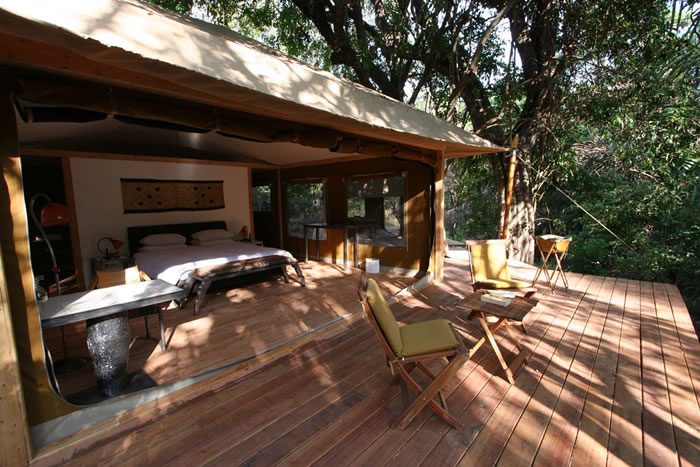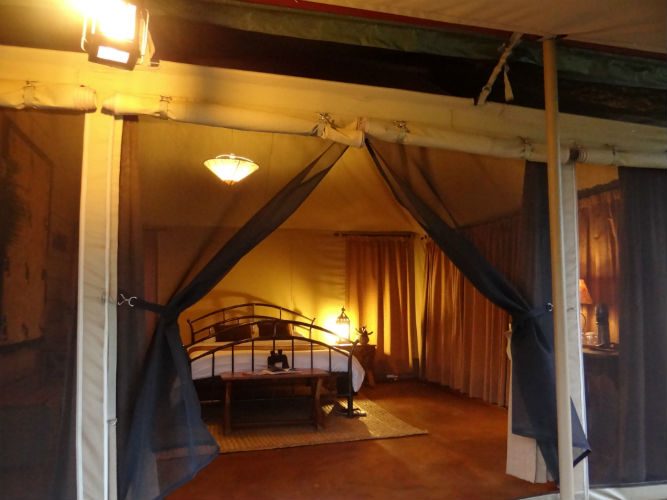Shs. 69,500/- full-board and Shs. 85,300/- ground package per person per night at Elsa’s Kopje Meru
Valid until 31 October 2025
Full-boardDouble – Shs. 69,500/- per person per night Single – Shs. 102,900/- per night |
Ground packageDouble – Shs. 85,300/- per person per night Single – Shs. 118,600/- per night |
Children0 to 5 – free of cost 5 to 17 sharing with 2 adults – 50% of adult rate |
To book this package please fill out the following form or simply email us on safaris@safari-center.com
Elsa’s Kopje Meru
Elsa’s Kopje is on the Mughwango hill, above the site of George Adamson’s camp where he raised lions. Each cottage is crafted around the rocks, with a large bedroom, open sitting room and veranda. Guests can enjoy seclusion in the vast expanse of Elsa’s Kopje. It is one of the most spectacular locations. Elsa’s is built round a granite hill. Each cottage was designed to take advantage of the stunning views, natural curves, rocks and trees on the hillside.
Meru park
The park offers a thriving rhino sanctuary, and is famous for large elephant herds, hippo, lion and birdlife. Meru national park has more animal species than any other park in East Africa. The rugged and remote Meru national park was rescued from oblivion thanks to this camp. Elsa’s Kopje is one of the most elegant lodges in Africa. It was designed and built by Stefano Cheli. And officially opened by Dr. Richard Leakey, and Virginia McKenna of Born Free fame in 1999.
About Elsa’s Kopje
Elsa’s Kopje was designed and built by Stefano Cheli. It was opened in 1999 by Dr Richard Leakey, and Virginia McKenna, the star of the 1960’s film born free. The lodge can be credited with single handedly saving this beautiful National Park. Being passionate about the environment, Stefano designed a lodge that was not only elegant, but deliberately hard to see. The lodge uses minimal power and received the first Eco-rating in Kenya in 2003.
The Born Free foundation
The Born Free foundation is a wildlife charity devoted to animal species across the globe. It has had and is continuing to have a significant impact on the way the world cares for its animals. 2014 sees the 30th anniversary of this essential organisation, and it has had a touching and important history.
The movie Born Free
In 1964 Bill Travers and Virginia McKenna first travelled to Kenya to star in the classic wildlife film ‘Born Free’. This was the inspiration behind the eventual formation of the foundation 20 years later. The film told the true story of George and Joy Adamson, who raised Elsa, a beautiful orphaned lion cub. They were later forced to give Elsa away, either to a zoo or release her to the wild. Having formed an everlasting bond with Elsa, Joy made the brave decision to work at releasing her back into the wild and natural habitat of Kenya – a move that changed public perception of keeping animals captive in zoos forever.
Virginia and Bill
Spending the time in Kenya making Born Free had a profound effect on Virginia and Bill, which lead Bill to begin producing other wildlife documentaries. In 1969 ‘An Elephant Called Slowly’ was produced and was set to have a further profound effect on public perceptions. The story followed the fate of elephant calf Pole-Pole who was snatched from his mother as a gift from the Kenyan Government to London Zoo. Despite having no power to prevent the calf being taken from the wild and from its mother, the pair campaigned as much as possible to prevent the move, and worked tirelessly to ensure Pole-Pole’s welfare.
Pole Pole
Bill and Virginia did not forget the plight of this little elephant. In 1982 they travelled to the zoo to see for themselves the fate of Pole Pole, and they found her lonely, frustrated, and aged by her experience in captivity. But, in a moment that changed Virginia’s life forever the elephant remembered them. As Virginia called out to her, she reached out to them in response. It was enough to rekindle their campaign to improve her life, and get her out of captivity. Unfortunately it was too late and in 1983, aged just 16, this influential elephant died – she lived a third of the life expectancy of an elephant in the wild.
Death of Pole Pole
Extremely saddened by the premature death of Pole Pole, in 1984 the Born Free Foundation was born. In its first guise the Born Free Foundation was established as ‘Zoo Check’ by Virginia, Bill and Bill’s son, Will Travers. They worked extensively to ensure the welfare of all animals in zoos across the UK, to ensure that zoos worked to provide the best conditions possible for animals. Still now Born Free works to phase out zoos and keep wildlife in the wild.
Birth of the foundation
It was in 1998 that Born Free Foundation Ltd. was established as we know it today. The umbrella organisation now encompasses the Zoo Check campaign, Elefriends Campaign, Wolf Campaign, Dolphin Campaign, Primate Campaign, Big Cat Campaign, and the Bear Campaign. This was where the organisation really became a fundamental part of caring for animal welfare across the globe. On its 25th anniversary in 2009 the Born Free Foundation thrust itself back into the media limelight and the public eye with a celebrity filled fundraiser in the Royal Albert Hall. Gabriella Cilmi, Martin Clunes, Bryan Adams and Joanna Lumely joined supporters to raise funds and to help save 25,000 animals world-wide.
Success
In 2014 Born Free continues to change attitudes of humans and provide animals with a voice. By supporting responsible safaris Born Free seeks to protect animals, and to promote a variety of welfare campaigns such as fighting the Ivory Trade and hunting as a form of sport, challenging exploitation of animals in circuses and zoos, and opposing killing wild animals as bush meat. Through global initiatives they can respond to emergency situations and they currently participate in Global International coalitions such as the Species Survival Network, and the People & Wildlife project with Oxford University. So their message is clear and one that we share. Animals need to be protected from human intervention and are best enjoyed where they can be healthy and happy: in their natural habitat.
Game drives
Elsa’s Kopje has open gamedrive vehicles. The current fleet are new, specially fitted, 4×4 Toyota Landcruisers. The vehicles are unrivalled with feature enhancements specifically designed for comfort and photography – open sided with 3 rows of seats, photographic equipment stands, and charging sockets. Clients will share game drives unless “exclusive use of vehicle” has been pre-booked at an extra charge. The park has enormous diversity of habitat and wildlife, gamedrives will take you through forests, past giant baobab trees, through clear spring fed streams lined with palms. This is lion and elephant country, but also Meru has many rare species including caracal, the beautiful Lesser Kudu, aardwolf, and over 400 species of birds.
Night game drives
Elsa’s Kopje has the whole National Park almost exclusively, and offers pre-dinner game drives with a red-light spotlights. Gamedriving at dusk and early evening opens up a whole new world, bushbabies, hunting predators, owls.
Day excursions to the Tana river
Take a picnic lunch, and take the whole day to explore the sandy Tana River, Kenya’s longest. Rising in the highlands of Mt Kenya and travelling 704kms before emptying into the Indian Ocean.
Rhino sanctuary
The National Park incorporates an 84 sq km rhino sanctuary, home to over 70 rhino, both black and white. The size of the sanctuary ensures that finding the rhino is still a gamedriving challenge!
Guided walks
Take the time to leave the car behind and enjoy the small things – tracks, dung beetles, naked mole rats and micro-ecosystems. One of the most popular walks is a climb up to the very top of Mughwango Hill, enjoying a 360 degree view from snow-capped Mt Kenya in the west to the vast Meru plains to the east. For some walks, Kenya Wildlife Service charge a small additional park fee.
River fishing
Take your rod, afternoon tipple with some canapés and a good book, and settle on the palm lined banks of one of Meru’s many rivers. The fishing is fun, with plentiful catfish, tilapia and barbell. Share your prey with herons, monitor lizards and spectacular kingfishers.
Swimming pool
Enjoy the cool waters in the heat of the day! An infinity pool perched on the side of the hill, the views are indeed infinite! The pool has bar service. The private house has its own private swimming pool.
Bush breakfasts and sundowners
Take a moment to sit back, enjoy the spectacular views, the smells, the colours, and the gentle breeze. Bush breakfasts are a chance to enjoy a full breakfast, al fresco, in the middle of the plains, surrounded by wildlife. “Sundowners” are a safari tradition – after a day of safari; stop, watch the spectacular sunset; traditionally with a gin and tonic in hand.
Massages
Safari is also a holiday and a rest – a break from today’s frenetic lifestyle. Elsa’s Kopje offers massages for wonderful way to ease the stress out of tired shoulders and backs.
Cultural visits
Elsa’s Kopje works with closely with the Tharaka community, and there are ways that you can get involved. Traditionally known for their ornate clothing including distinctive leather skirts and long cowrie shell decorated aprons for women, while the men wore animal skin cloaks and feathered headdresses that were a sign of prestige. Their houses are round with conical shaped roofs, thatched with grass.
Honeymoons
There is nothing more romantic than a safari! Already an unforgettable, once in a lifetime and pampered experience; safaris offer incredible sunsets, romantic tents with spectacular views, and relaxed al fresco dinners. All the cottages at Elsa’s Kopje are outstanding suites, but we also have a “Honeymoon Suite” which can be booked especially for a honeymoon. Being a very special holiday, we often have special offers and upgrades for honeymooners.
Weddings
Over the years, Elsa’s Kopje has hosted very many beautiful weddings, blessings, and renewal of vows for our guests. From small simple ceremonies involving merely a glass of champagne at the end of a gamedrive; to elaborate three day events, with over 20 guests taking over the whole property. Discuss your ideas with your travel agent, or contact us for more information.
Cottages
Nestled into the hillside, and overlooking the vast plains of Meru National Park, each of Elsa’s Kopje’s open-fronted cottages are unique in design and offer an elegant safari style.
Family cottage
Brand new and with panoramic views of the Park. The Family Cottage is a spacious 2-bedroom cottage with a double and a twin room, both en-suite, a beautiful living room, large private deck and an outside bath by the master bedroom.
Honeymoon suites
Overlooking the vast plains of Meru National Park, Elsa’s has three Honeymoon Suites. Two of the suites have romantic outside baths and one suite has three levels featuring a private sitting room, main bedroom with en-suite bathroom, and a small private deck. For families with small children, two of the Suites can accommodate an extra bed suitable for children under 16.
Private house
Overlooking the vast plains of Meru National Park and facing Mt Kenya, Elsa’s Private House consists of one en-suite master bedroom with dressing room, one en-suite twin bedroom, a large dining and sitting room, a private garden and infinity swimming pool. The private house can fit two extra beds, for children under 16yrs.
About Meru national park
Meru National Park covers 1800 sq kms, and is the core of an ecosystem that includes Kora, Bisandi, North Kitui and Rahole Reserves, an additional over 5000 sq kms of wilderness. Elsa’s Kopje is in the heart of the park, on small rocky Mughwango hill that affords 360 degree views that stretch from the 17,000 foot peak of Mt Kenya to the east, to virtually infinity to the east. Below the hill is the site of George Adamson’s camp, and the hill was the playground of Elsa the lion. There is a fertile spring to the east of the hill and guests can watch vast herds of elephant, buffalo and giraffe make their way across the plains below. Elsa’s Kopje is one of only two lodges in the National Park, and so guests will have this vast wilderness practically to themselves.
Joy & George Adamson
The park was made famous in the 1960s by Joy & George Adamson, who reintroduced their beloved lioness “Elsa” into the wild in Meru National Park. They wrote a book about their experience which was made into a feature film “Born Free” starring Virginia McKenna and Bill Travers – a ground breaking movie; the first to depict wild animals as endearing creatures, whose plight the audience could sympathize with. George Adamson continued to work with lions, living to the south of Meru National Park, until his death in 1989. Both Joy Adamson, and Elsa the lioness, are buried in Meru National Park.
Wildlife
The park has enormous diversity of habitat and wildlife, from cool forests at 3400 ft to the west, dropping down to 1000 ft semi-desert plains with giant baobab and commiphora trees. It has thirteen clear spring fed rivers lined with palms and riverine forest, and home to basking hippo. This is lion and elephant country, but also Meru has many rare species including caracal, the beautiful Lesser Kudu, aardwolf, and over 400 species of birds. The park also has an 84 sq km rhino sanctuary housing over 60 black and white rhino. The area is so large that finding the rhino can still be a gamedriving challenge.
Climate
The days are warm, rising to maximum of 30 deg C, but comfortable with minimum humidity, and the evenings are cool. Rainfall is mostly in April and May with an average of 350mm per year.
Community & conservation
In the 1980′s and 90′s, poachers slaughtered many of the elephants and rhinos were completely eradicated from the area. The park’s infrastructure was deadened. Tourism plummeted. Despite the park’s state of despair, with a passion for this beautiful wilderness, We believed that they could build a successful lodge to secure Meru’s future existence. They entered into discussion with KWS in 1993 and after four years of negotiating, we received the approval. Since the lodge was built in 1999, Meru National Park has experienced a steady increase in tourist numbers, from 3,500 in 1999 to 15,200 in 2009 and now has a reputation as one of the best wilderness areas on the safari circuit. Elsa’s Kopje contributes to the KWS through lease payments and park fees, which amounted to US$ 76,080 and US$ 150,479 respectively in 2011 alone.
Infrastructure
The generation of these funds has triggered restorative action by the KWS and infrastructure and security networks have been implemented, including a 24 hour rhino surveillance which was introduced in 2003 and a specialised poaching intelligence unit, with vastly effective poaching reduction results. At least 1,350 animals have been successfully translocated to Meru, including reticulated giraffe, Grevy’s zebra, impala, Bohors reedbuck, leopard and elephant. The rich diversity also includes more than 400 bird species. KWS has also installed a 20,750 acre rhino sanctuary which now protects a population of over 70 white and black rhino. All this considered, Elsa’s Kopje has undoubtedly made a huge contribution to ensuring that Meru National Park is once again a viable conservation area.
Sustainable tourism
Elsa’s Kopje has been awarded silver level by the internationally recognised Ecotourism society in recognition of its high level of environmental responsibility; and it was the first lodge in Kenya to receive an eco-rating. The lodge consumes a minimum amount of energy through investments in LED and energy saving bulbs, solar water heaters and power to supplement the generator, limiting diesel generator use to only 6 hours per day. To limit our carbon footprint, we source fresh produce from the farmers on the borders of the park. Timber is from renewable sources. We responsibly dispose of or recycle the rubbish and sell the separated glass to the recycling plant ‘Central Glass’ in Nairobi.
Make a difference
On your safari, through the Land and Life Foundation, you can really make a difference to the communities you are travelling near, by donating stationary, text books, uniforms, food and sports equipment in person, directly to the staff and pupils of a school. We work closely with the Committees of each school to make sure that each donation addresses a genuine need highlighted specifically by the school staff and parents.
Ura gate primary school
Being able to really make a difference to the lives of children in a rural community can be a life changing experience and unforgettable memory from your safari in Kenya. Elsa’s Kopje and the Land and Life Foundation have been working closely with Ura Gate Primary School since May 2011 to identify and address the school’s most urgent needs. Ura Gate Primary caters for 350 students aged 6-14, very few of whom had any access to text books when we initiated our support programme. However, thanks to the generosity of a great number of Elsa’s visitors, we were able to donate text books and repair and reconstruct some classrooms.
Donations
If you are considering bringing donations from abroad, visit the Pack for a Purpose website for very specific advice. Please do note that when flying within Kenya, the internal flight weight restriction is 15kg and may therefore limit what you can carry with you to the camps and donate to the rural communities in person. We can always, however, donate anything over and above your weight limit on your behalf at a later date.
